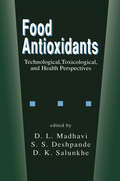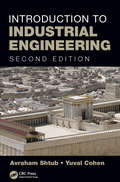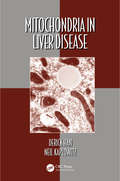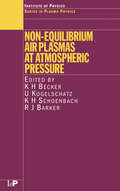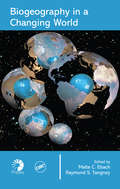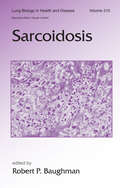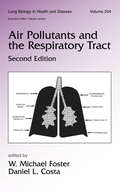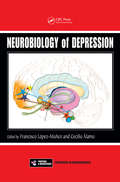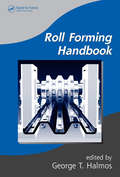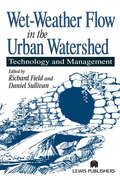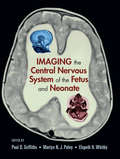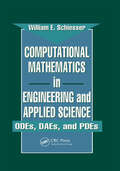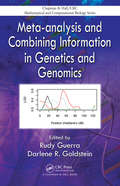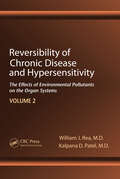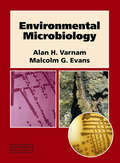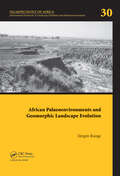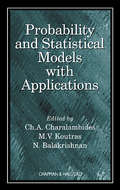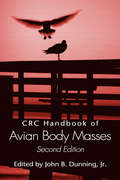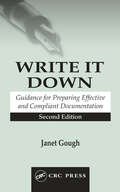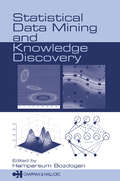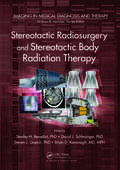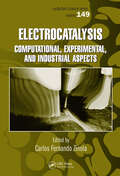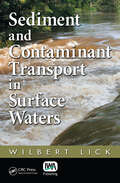- Table View
- List View
Food Antioxidants: Technological: Toxicological and Health Perspectives
by S.S. Deshpande D.L. Madhavi D.K. Salunkhe"Offers comprehensive coverage of the latest toxicological, technological, and nutritional developments in both natural and synthetic antioxidants used in the food industry. Explores the sources of antioxidants, antioxidant classification, synergism, degradation in food systems, and techniques for identification."
Introduction to Industrial Engineering (Systems Innovation Book Series)
by Avraham Shtub Yuval CohenA Firsthand Look at the Role of the Industrial EngineerThe industrial engineer helps decide how best to utilize an organization’s resources to achieve company goals and objectives. Introduction to Industrial Engineering, Second Edition offers an in-depth analysis of the industrial engineering profession. While also providing a historical perspective chronicling the development of the profession, this book describes the standard duties performed, the tools and terminologies used, and the required methods and processes needed to complete the tasks at hand. It also defines the industrial engineer’s main areas of operation, introduces the topic of information systems, and discusses their importance in the work of the industrial engineer. The authors explain the information system concept, and the need for integrated processes, supported by modern information systems. They also discuss classical organizational structures (functional organization, project organization, and matrix organization), along with the advantages and disadvantages of their use. The book includes the technological aspects (data collection technologies, databases, and decision-support areas of information systems), the logical aspects (forecasting models and their use), and aspects of principles taken from psychology, sociology, and ergonomics that are commonly used in the industry. What’s New in this Edition:The second edition introduces fields that are now becoming a part of the industrial engineering profession, alongside conventional areas (operations management, project management, quality management, work measurement, and operations research). In addition, the book: Provides an understanding of current pathways for professional development Helps students decide which area to specialize in during the advanced stages of their studies Exposes students to ergonomics used in the context of workspace design Presents key factors in human resource management Describes frequently used methods of teaching in the field Covers basic issues relative to ergonomics and human–machine interface Introduces the five basic processes that exist in many organizations Introduction to Industrial Engineering, Second Edition establishes industrial engineering as the organization of people and resources, describes the development and nature of the profession, and is easily accessible to anyone needing to learn the basics of industrial engineering. The book is an indispensable resource for students and industry professionals.
Mitochondria in Liver Disease
by DERICK HAN NEIL KAPLOWITZ" excellent, well-organized, and timely."-Lester Packer and Enrique Cardenas, University of Southern California, Los Angeles, from the Series PrefaceThe liver is a vital organ that is responsible for a wide range of functions, most of which are essential for survival. The multitude of functions the liver performs makes it vulnerable to a wide range
Non-Equilibrium Air Plasmas at Atmospheric Pressure (Series in Plasma Physics)
by K H Becker U Kogelschatz K H Schoenbach R J BarkerAtmospheric-pressure plasmas continue to attract considerable research interest due to their diverse applications, including high power lasers, opening switches, novel plasma processing applications and sputtering, EM absorbers and reflectors, remediation of gaseous pollutants, excimer lamps, and other noncoherent light sources. Non-Equilibrium Air Plasmas at Atmospheric Pressure reviews recent advances and applications in the generation and maintenance of atmospheric-pressure plasmas. With contributions from leading international researchers, the coverage includes advances in atmospheric-pressure plasma source development, diagnostics and characterization, air plasma chemistry, modeling and computational techniques, and an assessment of the status and prospects of atmospheric-pressure air plasma applications. The extensive applications sections make this book attractive for practitioners in many fields where technologies based on atmospheric-pressure air plasmas are emerging.
The Thorax -- Part A: Physiology (In Three Parts), Second Edition (Lung Biology in Health and Disease)
by Charis RoussosThis book provides a comprehensive, authoritative, and contemporary discussion of the physiology and pathophysiology of the chest wall as well as an overview of the diagnostic and therapeutic modalities. It is an invaluable aid to clinical investigators.
Biogeography in a Changing World
by Malte C. Ebach Raymond S. TangneyHampered by a confusing plethora of approaches and methods, biogeography is often treated as an adjunct to other areas of study. The first book to fully define this rapidly emerging subdiscipline, Biogeography in a Changing World elucidates the principles of biogeography and paves the way for its evolution into a stand-alone field.Drawin
Sarcoidosis (Lung Biology in Health and Disease)
by Robert P. BaughmanThis reference serves as the most current and comprehensive source on the many aspects of sarcoidosis ranging from the basic science and pathophysiology of the disease to patient evaluation and treatment-providing a detailed analysis of the pulmonary aspects of the condition including chapters on radiographic manifestations, bronchoalveolar lavage
Air Pollutants and the Respiratory Tract
by W. Michael Foster Daniel L. CostaEmphasizing the impact of air toxins and contaminants on human health, this Second Edition examines the latest research from the epidemiology to the cellular mechanisms underlying cardiopulmonary responses to air pollution. This guide offers chapters that address the basic biology, techniques, and clinical practices used to monitor and assess acute
Neurobiology of Depression (Frontiers in Neuroscience)
by Cecilio Álamo Francisco López-MunozMajor depressive disorders have recently been associated with impairments in signaling pathways that regulate neuroplasticity and cell survival. Agents designed to directly target molecules in these pathways hold promise as new therapeutics for depression. With the collaboration of the most prestigious international specialists in biochemistry, mol
Roll Forming Handbook (Manufacturing Engineering and Materials Processing)
by George T. HalmosRoll forming is one of the most widely used processes in the world for forming metals. Most of the existing knowledge resides in various journal articles or in the minds of those who have learned from experience. Providing a vehicle to systematically collect and share this important knowledge, the Roll Forming Handbook presents the first comprehens
Wet-Weather Flow in the Urban Watershed: Technology and Management
by Richard Field Daniel SullivanAccording to the National Resources Defense Council, stormwater runoff rivals or exceeds discharges from factories and sewage plants as a source of pollution throughout the United States. The Environmental Protection Agency identifies urban stormwaters as the second largest source of water quality damage in estuaries and a significant contributor t
Imaging the Central Nervous System of the Fetus and Neonate
by Paul D. Griffiths Martyn N. J. Paley Elspeth H. WhitbyThis reference provides an authoritative overview of the role of ultrasonography and MR imaging technologies in the examination and assessment of the central nervous system of the fetus and neonate. Spanning advancements in fetal ultrasound, in-utero MR, the imaging of the neonatal brain, and the analysis of normal and abnormal brain development, t
Computational Mathematics in Engineering and Applied Science: ODEs, DAEs, and PDEs (Symbolic & Numeric Computation)
by W.E. SchiesserComputational Mathematics in Engineering and Applied Science provides numerical algorithms and associated software for solving a spectrum of problems in ordinary differential equations (ODEs), differential algebraic equations (DAEs), and partial differential equations (PDEs) that occur in science and engineering. It presents detailed examples, each
Meta-analysis and Combining Information in Genetics and Genomics (Chapman & Hall/CRC Computational Biology Series)
by Rudy Guerra Darlene R. GoldsteinNovel Techniques for Analyzing and Combining Data from Modern Biological StudiesBroadens the Traditional Definition of Meta-AnalysisWith the diversity of data and meta-data now available, there is increased interest in analyzing multiple studies beyond statistical approaches of formal meta-analysis. Covering an extensive range of quantitative infor
Reversibility of Chronic Disease and Hypersensitivity,Volume 2: The Effects of Environmental Pollutants on the Organ System
by William J. Rea Kalpana D. PatelEncyclopedic in scope, Reversibility of Chronic Degenerative Disease and Hypersensitivity, Volume 2: The Effects of Environmental Pollutants on the Organ System draws deeply from clinical histories of thousands of patients. It focuses on clinical syndromes within the musculoskeletal, gastrointestinal, and respiratory systems. The book explores mech
Environmental Microbiology
by Alan Varnam Malcolm EvansMicro-organisms play a major role in the geochemistry of the planet, forming the basic stage in the food chain, and thus sustaining the existence of higher evolutionary life. The continuing interaction between these living organisms and the environment, combined with their exploitation by man are shaping the material world today.Over the last few y
Injection Treatments in Cosmetic Surgery (Series in Cosmetic and Laser Therapy)
by Benjamin AscherInjections are minimally invasive and therefore particularly popular with both plastic surgeons and dermatologists - as well as any other practitioners dedicated to the aesthetic field - with faster procedures and faster recovery time.This comprehensive textbook, from a team of experts, documents the most popular injection treatments - botulinum to
African Palaeoenvironments and Geomorphic Landscape Evolution: Palaeoecology of Africa Vol. 30, An International Yearbook of Landscape Evolution and Palaeoenvironments (Palaeoecology of Africa)
by Jürgen RungeThis 30st jubilee volume (2010) of "Palaeoecology of Africa" looks back and reflects the "state of the art" of what is actually known on former African climates and ecosystems in the format of review articles authored by specialists in the field. New research articles on climate and ecosystem dynamics as well as applied topics on geomorphic ha
Probability and Statistical Models with Applications
by Ch. A. CharalambidesThis monograph of carefully collected articles reviews recent developments in theoretical and applied statistical science, highlights current noteworthy results and illustrates their applications; and points out possible new directions to pursue. With its enlightening account of statistical discoveries and its numerous figures and tables, Probabili
CRC Handbook of Avian Body Masses
by John B. Dunning Jr.See what's new in the Second Edition: Number of species included is increased from 6300 to over 8700, about 85% of the world's birds Better data for many of the species included in the first edition- an exhaustive compilation of new data publis
Write It Down: Guidance for Preparing Effective and Compliant Documentation
by Janet GoughA well-understood tenet exists among the FDA and other regulatory bodies: if you didn't write it down, it didn't happen. And if it didn't happen, your company stands to lose time, money, and perhaps its competitive edge. Write it Down: Guidance for Preparing Effective and Compliant Documentation provides you with the tools you need to put effective
Statistical Data Mining and Knowledge Discovery
by Hamparsum BozdoganMassive data sets pose a great challenge to many cross-disciplinary fields, including statistics. The high dimensionality and different data types and structures have now outstripped the capabilities of traditional statistical, graphical, and data visualization tools. Extracting useful information from such large data sets calls for novel approache
Stereotactic Radiosurgery and Stereotactic Body Radiation Therapy (Imaging in Medical Diagnosis and Therapy)
by Stanley H. Benedict David J. Schlesinger Steven J. Goetsch Brian D. KavanaghWritten by internationally known experts in the field, Stereotactic Radiosurgery and Stereotactic Body Radiation Therapy examines one of the fastest-developing subspecialties within radiation oncology. These procedures deliver large doses of radiation in one to five sessions to a precisely determined target. Often these techniques have proven to be
Electrocatalysis: Computational, Experimental, and Industrial Aspects
by Carlos Fernando ZinolaElectrocatalysis applications are employed in a large number of industries worldwide, ranging from old technologies such as galvanoplasty to the most up-to-date deployments involving ultracapacitators. Recognizing electrocatalysis as a useful interfacial approach to a dynamic interdisciplinary science, Electrocatalysis: Computational, Experimental,
Sediment and Contaminant Transport in Surface Waters
by Wilbert LickContaminated bottom sediments and their negative impacts on water quality are a major problem in surface waters throughout the United States as well as in many other parts of the world. Even after elimination of the primary contaminant sources, these bottom sediments will be a main source of contaminants for many years to come. In order to determin
